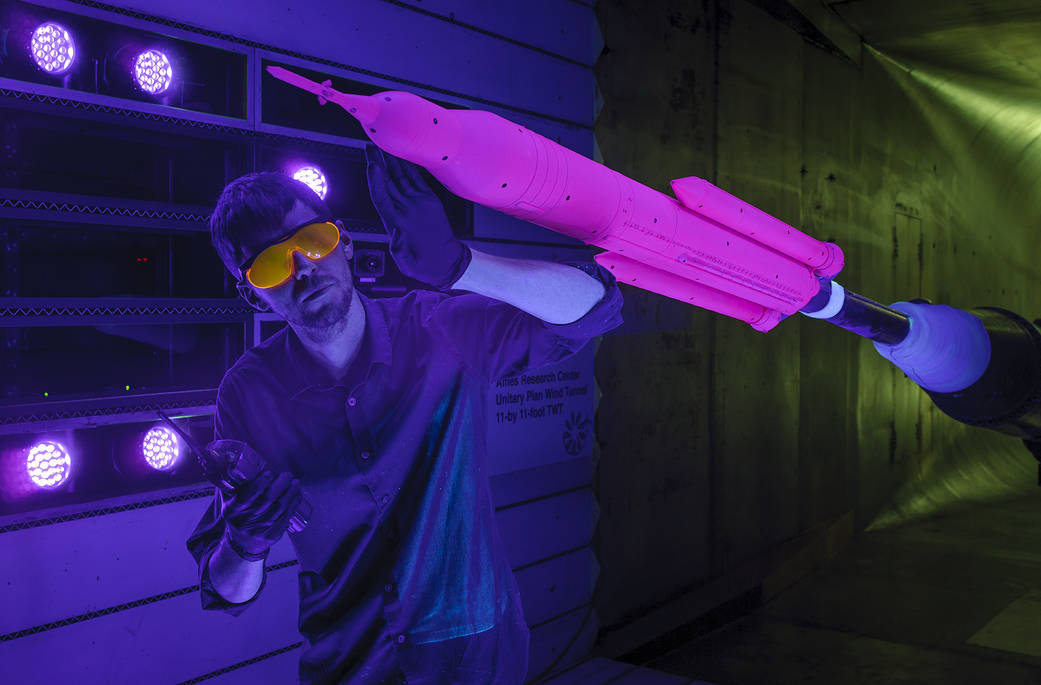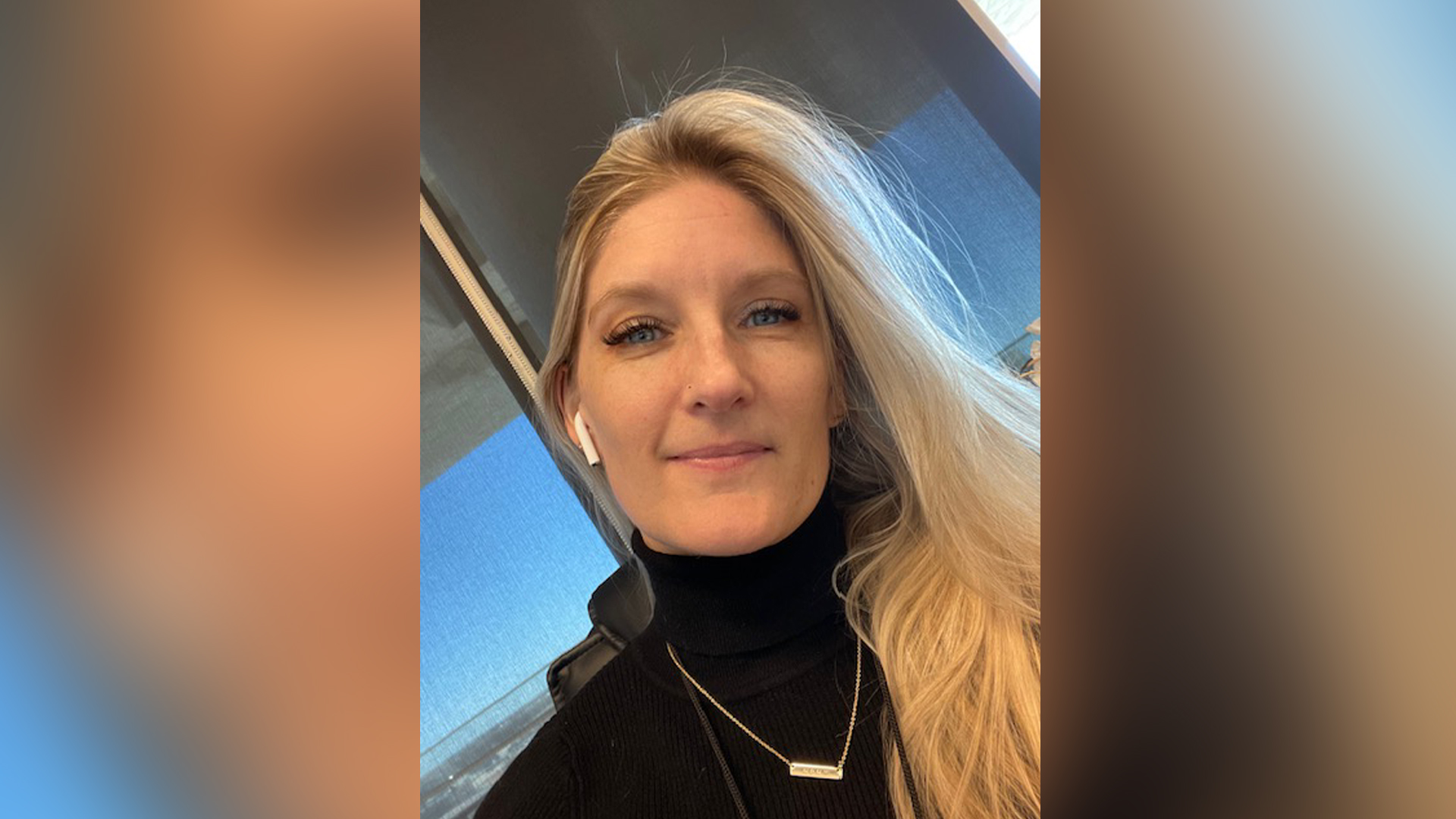Hot Pink Model Rocket Makes Way for NASA's New Megarocket

The first test flight of NASA's 21st century megarocket, the towering Space Launch System (or SLS), is planned for fall 2018 and the latest tests on what will be the world's most advanced launch vehicles have the space agency seeing pink.
When complete, the first version of NASA's SLS rocket will be 322 feet tall with a 70 metric ton (77 ton) lift capability. A larger and more powerful second-generation configuration will be 364 feet tall, carrying 105-metric tons (115 tons). [NASA's Space Launch System in Pictures]
In this image, Patrick Shea of NASA's Langley Research Center in Virginia adjusts a nearly 4.75-foot long (1.3 percent scale) model of a second-generation SLS booster during wind tunnel tests at the agency's Ames Research Center in California. The rocket model is covered in a special paint, which glows a brilliant pink under blue light, that helps engineers understand the aerodynamic forces at work on the booster.
The pink-paint test is just one of many wind tunnel tests underway NASA's SLS to evaluate the forces and loads that air induces on the launch vehicle during every phase of flight.
According to Jeff Bland, SLS discipline lead engineer for Integrated Vehicle Structures & Environments at NASA's Marshall Space Flight Center in Huntsville, Alabama, aeronautics is key to the design of the up-and-coming SLS rocket. The rocket must travel through Earth's atmosphere first on the voyage to deep space.
John Blevins, SLS lead engineer for aerodynamics and acoustics at Marshall, explains that "all the critical aerodynamic environments, from when the upgraded rocket leaves the Vehicle Assembly Building at Cape Canaveral to launch, acceleration through the sound barrier and booster separation at greater than Mach 4 are evaluated in these four tests."
At NASA's Ames Research Center at Moffett Field, California, ascent tests determine the rocket's behavior as it climbs after launch, as well as the kind of instructions programmed into the flight computer for guidance and control as the rocket passes through transonic flight.
Get the Space.com Newsletter
Breaking space news, the latest updates on rocket launches, skywatching events and more!
At Virginia's Langley Research Center, buffet testing focuses on how the cargo version of the second-phase SLS rocket acts as it zooms through the atmosphere at about 800 mph, just below the speed of sound , and transitions into supersonic flight. The shock waves produced as the vehicle approaches the speed of sound, can cause unwanted movements and unsteady loads that could lead to damage or course changes that must be corrected, Blevins said.
Additionally, two other test series are planned at Langley. The first will provide data to ensure that the SLS's two solid rocket boosters disconnect and move away from the rocket's path. Next will be liftoff transition testing, examining the effects of winds on the rocket standing on the pad, and the presence of the mobile launcher and tower during liftoff in hopes of reducing drift between the vehicle and surrounding structures.
Follow us @Spacedotcom, Facebook and Google+. Original story posted on Space.com.
Join our Space Forums to keep talking space on the latest missions, night sky and more! And if you have a news tip, correction or comment, let us know at: community@space.com.

Christine Lunsford joined the Space.com team in 2010 as a freelance producer and later became a contributing writer, covering astrophotography images, astronomy photos and amazing space galleries and more. During her more than 10 years with Space.com, oversaw the site's monthly skywatching updates and produced overnight features and stories on the latest space discoveries. She enjoys learning about subjects of all kinds.









